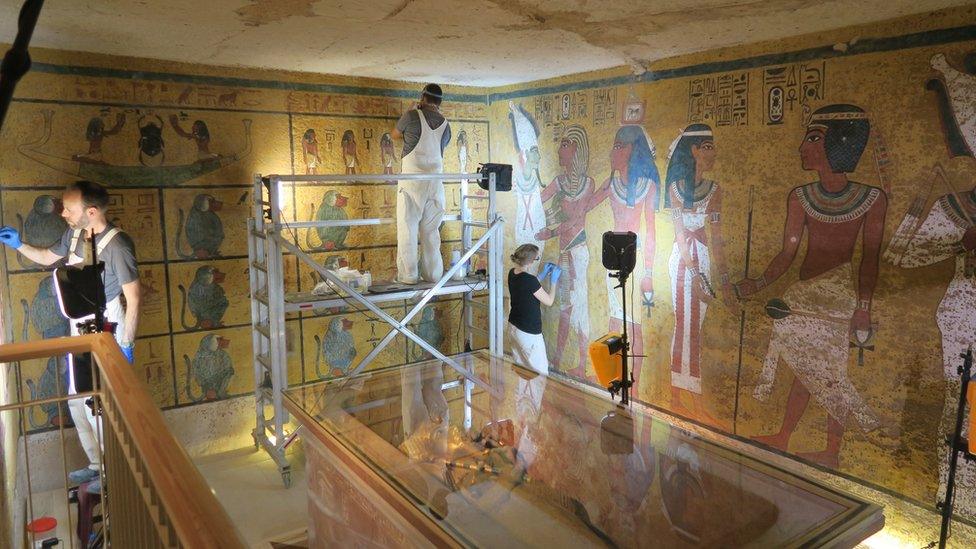Tutankhamun's tomb: 10 year restoration is completed
- Published

He's one of history's most famous kings - and now a 10 year restoration of Tutankhamun's tomb has been completed.
The Egyptian king's tomb was discovered in 1922 in what's now known as the Valley of the Kings. It was one of the most well preserved tombs that conservationists had ever found.
The tomb was filled with treasure and detailed wall paintings that showed the story of King Tutankhamun's life and death.
After the treasures had been catalogued and cleared, the tomb itself became a tourist destination when it was opened to the public in the 1930s.
But with the visitors came dust and carbon dioxide that affected the wall paintings and authorities started to worry about how long the tomb would last.
The Egyptians believed in an afterlife - the idea that they would live on after their death.
As well as their bodies, which were preserved through mummification, Egyptians also believed they would need their belongings in the afterlife.
Rich and important Egyptians were buried in tombs with all their treasure to take with them.
In 2009, the Getty Conservation Institute began a 10 year restoration project.
They carefully cleaned and restored the damaged wall paintings.
They also put in new barriers, walkways and viewing platforms and a ventilation system, in order to better protect the tomb in the future.
The project has been the biggest study of the tomb since it was first discovered. It is hoped that the upgrades will mean visitors can enjoy the tomb for many years to come.
- Published25 November 2018
- Published22 February 2016
- Published17 December 2014
- Published11 August 2015
- Published11 May 2015
- Published12 October 2012
- Published28 March 2013
